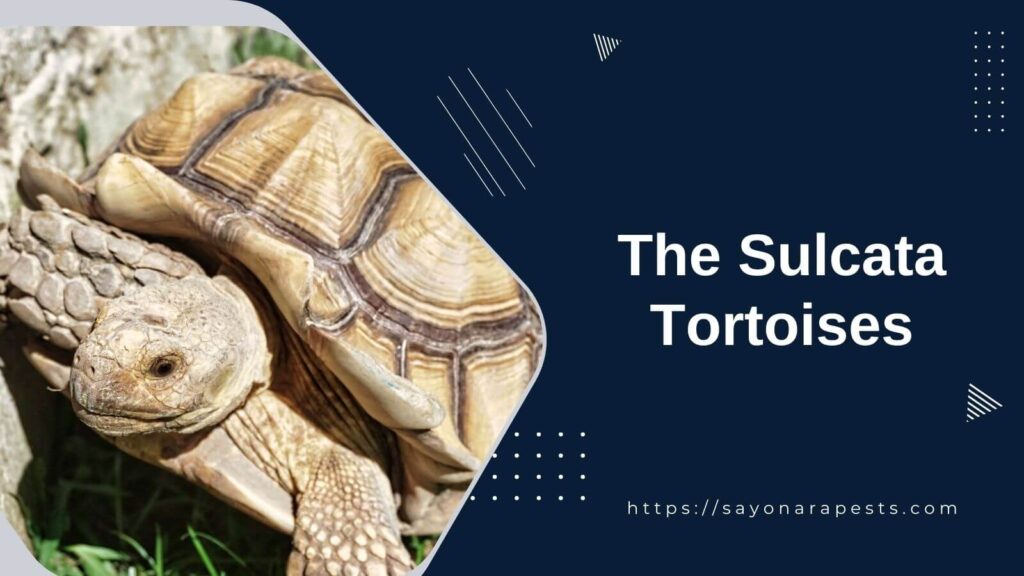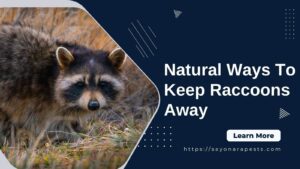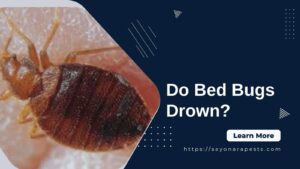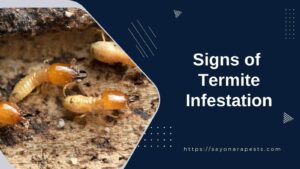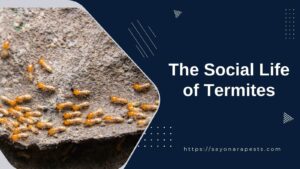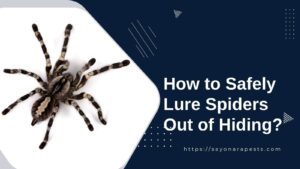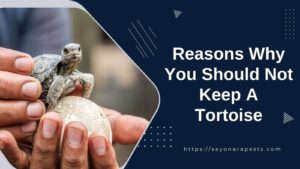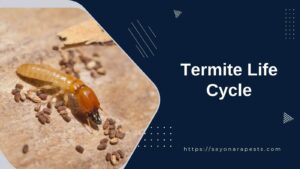Sulcata tortoises, which are also called African spurred tortoises, live in the dry areas of northern Africa. With their large size and unique features, they have caught the attention of both animal lovers and scientists.
To figure out what makes these ancient reptiles so mysterious, you need to know about their unique personalities and behaviors.
This article explores the fascinating world of sulcata tortoises, shedding light on their interesting traits, fascinating habits, and how important it is to understand their many complicated parts.
By going deep into their lives, we set out on a journey to find out what secrets are hidden inside the hard shells of these amazing creatures.
Prepare to be drawn into the fascinating world of the sulcata tortoises, where every moment brings new discoveries and revelations.
Physical Characteristics of Sulcata Tortoises
People know about Sulcata tortoises because they are big and have amazing bodies. These beautiful animals are one of the largest species of tortoises in the world.
The average size of an adult sulcata tortoise is huge, and males often get bigger than females.
Males can have a carapace length of up to 30 inches (76 cm) and weigh between 80 and 200 pounds (36 to 91 kg), while females usually have a carapace length of around 24 inches (61 cm) and weigh between 60 and 150 pounds (27 to 68 kg).
Because they are so big, they stand out in the places where they live in the wild.
The top part of the tortoise’s shell called the carapace, is one thing that makes it a sulcata tortoise. It is a large, dome-shaped shell that protects the tortoise’s vital organs very well. A mature sulcata tortoise’s shell, or carapace, has clear growth rings.
Each ring shows a year of growth. Researchers can figure out how old a tortoise is by looking at its growth rings, which are like a visual timeline. Also, the carapace often has deep furrows, called sulci, that give the species its common name, “sulcata tortoise.”
These sulci give the carapace of these reptiles a unique, textured look that adds to their unique beauty.
When it comes to their legs, sulcata tortoises have strong, sturdy legs that are perfect for getting around in their dry environments. Their front limbs have strong, sharp claws that help them dig burrows to live in and hunt for food.
These claws also help protect them from possible predators. The back legs of sulcata tortoises are strong and muscular, which makes it easier for them to move on different surfaces.
The length of their limbs and the size of their bodies make them powerful wanderers in their natural environments.
When it comes to patterns and colors, sulcata tortoises have a lot of interesting differences. Their shells are usually different shades of brown, from dark to light, and some even have hints of reddish or golden colors.
The patterns on the carapace can be complicated, with lines or patches that spread outward. Together with the textures made by the sulci, these patterns and textures make each tortoise look very interesting.
The plastron, or the underside of the shell, is usually lighter in color, with yellowish to creamy shades. This difference in color between the carapace and plastron makes these beautiful creatures look even better.
Overall, the way sulcata tortoises look shows how grand they are and how well they can adapt. From how big and heavy they are to the intricate patterns on their shells, these animals are truly amazing.
Their strong legs and sharp claws make it easy for them to move around in their environments, and their unique colors and textures make them easy to spot.
By learning about these physical traits, we can better appreciate the unique beauty of sulcata tortoises and how they have changed over time.
Natural Habitat and Diet
Sulcata tortoises live in the dry parts of northern Africa, in places like Chad, Mali, Mauritania, Niger, and Senegal.
The climate in these places is hot and dry, and the land is sandy or rocky, with few plants. The sulcata tortoises have learned how to survive in these harsh environments, which makes them very tough and well-suited to their natural homes.
In the wild, sulcata tortoises are mostly herbivores, which means that they eat plants. Most of what they eat are grasses, succulents, and leafy greens that grow in their natural environment.
They use their strong jaws and mouths that look like beaks to graze on whatever plants are around. Their rough tongues help them break up food particles, which makes it easier for them to eat plant matter with a lot of fiber.
When thinking about what to feed captive sulcata tortoises, it’s important to try to mimic as closely as possible how they eat in the wild. This means giving them a wide range of high-fiber plant foods that are similar to what they would eat in the wild.
Grasses like Bermuda grass, Timothy grass, and alfalfa are often part of their diets when they are kept in captivity. The water and nutrients in leafy greens like kale, collard greens, and dandelion greens are very important.
You can also give them a variety of vegetables, such as squash, bell peppers, and carrots, to add to their diet.
Even though plants are the main part of their diet, it is very important that sulcata tortoises get enough calcium supplements.
This can be done by giving them foods that are high in calcium, like calcium carbonate powder or cuttlebone. Calcium is important for the growth and health of their shells and bones in general.
Sulcata tortoises that are kept as pets should have a shallow water dish for drinking and soaking. Staying hydrated is important for their health.
But it’s important to remember that their water dish shouldn’t be big enough for them to fully submerge. Sulcata tortoises aren’t meant to live in water, and too much soaking can be bad for their health.
Knowing where sulcata tortoises live and what they eat in the wild is important for their care and well-being when they are in captivity.
It is important to recreate their natural environment and give them a varied, high-fiber diet of grasses, leafy greens, and vegetables.
By adding calcium to their diet, their shells and bones will stay in good shape. By giving these amazing reptiles a balanced diet that is right for their species, we can help them stay healthy and live longer.
Unique Personality Traits of Sulcata Tortoises
Sulcata tortoises have many interesting and unique qualities that make them stand out from other reptiles. Even though they look slow and lumbering, these tortoises are surprisingly curious and like to explore.
They are often very interested in what’s going on around them, sniffing and nibbling at different things they find to learn more. This makes them curious, which helps them learn about their surroundings and interact with the world.
Aside from being curious, sulcata tortoises are known for being playful, which can show up in different ways. One interesting thing they do is something called “head-butting,” which is when they lightly bump their heads against things or even other tortoises.
Head-butting is a way for sulcata tortoises to talk to each other and make friends. It can be seen during fights over territory, courtship rituals, or just as a way to show dominance or make themselves known.
This playful behavior not only makes them more interesting, but it also shows how they interact with each other.
Even though sulcata tortoises don’t usually make sounds, they do have a few sounds that they use to talk to each other. Most of the time, these sounds are low-pitched hisses or grunts that they make by letting air out of their lungs.
People think that these sounds are a way for individuals to talk to each other and show different emotions, such as territoriality, distress, or courtship.
Even though their sounds aren’t as complex or varied as those of mammals or birds, they are still an important part of how they interact with each other and talk to each other.
One interesting thing about sulcata tortoises is that each one has its own personality. Even though tortoises tend to act in similar ways as a group, each one has its own personality and preferences.
Some may be more outgoing and friendly, coming up to people easily or showing more curiosity, while others may be more shy or careful.
These differences between individuals add to the variety and mystery of the species as a whole and show how complex their personalities are.
Understanding how sulcata tortoises are different from other types of tortoises not only makes our interactions with them more interesting but also helps us give them the right care and make their environment more interesting.
By recognizing their natural curiosity, we can create environments that are interesting and full of new things and places to explore. Recognizing how playful they are lets us play with them in ways that are good for their physical and mental health.
Also, because people have different personalities, we can tailor their care and give them personalized attention to meet their needs and preferences.
In this regard, sulcata tortoises have a lot of interesting qualities that make them interesting and cute animals.
Their curiosity, playfulness, sounds, and different personalities make their social interactions more complicated and give them a deeper understanding of the world around them.
By appreciating and understanding these unique traits, we can get to know these amazing reptiles better and make sure they stay healthy in captivity.
Behavioral Patterns of Sulcata Tortoises
Sulcata tortoises have a wide range of interesting behaviors that are important for their survival and health.
These actions show how they have learned to deal with the unique challenges of their environment and give us a better idea of how complicated their lives are.
Sulcata tortoises spend a lot of time basking and adjusting their body temperature every day. As ectothermic reptiles, they need heat from the outside to keep their bodies at the right temperature.
They do something called “bathing,” which is when they put themselves in direct sunlight and soak up the heat to warm up. Not only does basking help them keep their bodies at the right temperature, but it also helps with digestion and metabolism.
By watching how they lie in the sun, you can see that they position themselves on purpose, often tilting their bodies to get the most sun. This shows that they have a natural ability to change and make the most of their temperature environment.
Sulcata tortoises also dig and burrow a lot. This is another important part of their behavior.
In their natural environments, where temperatures can be very high and food is scarce, these tortoises have learned to dig burrows for shelter and to control their body temperature.
The burrows protect them from the hot sun, extreme temperatures, and animals that could hurt them. Sulcata tortoises use their strong legs and sharp claws to dig deep burrows that can go down as far as several feet.
These burrows not only give them a safe place to live, but they also help keep their bodies at the right temperature by giving them a place to go when it’s hot outside.
Sulcata tortoises do important things like move around and sleep during the winter. In their native habitats, these tortoises may move around in response to the changing seasons and the availability of food.
This helps them find good places to eat and the best conditions in which to live. Also, sulcata tortoises will go into hibernation when it gets colder and there is less food available.
They dig deep holes in the ground and slow down their activity and metabolism so they can save energy during the winter. Hibernation helps them get through the hard times and makes sure they will live for a long time.
The way sulcata tortoises interact with each other adds another layer of complexity to their behavior patterns. Even though they are not very social, they do have some social tendencies.
During the breeding season, males show off their territory and try to get the attention of females by doing things like fighting and dancing. Head-butting, which was already talked about, is one way that males interact when they are fighting over territory.
On the other hand, females can show interest in a male in many ways, such as by moving their heads or moving in circles.
Even though they don’t usually make long-term friendships, sulcata tortoises may sometimes gather in places with a lot of food, which gives them a chance to talk to each other.
In the end, the ways sulcata tortoises act show how well they have adapted and how complicated their lives are. They can keep their bodies at the right temperature by basking and using thermoregulation, and they need to burrow and dig to stay alive.
They can deal with the changing seasons and save energy by migrating and going into hibernation. Even though they don’t do a lot of social things, it helps them get along with each other and reproduce.
By studying and appreciating these patterns of behavior, we can learn more about the amazing strategies and actions that have helped sulcata tortoises survive in their tough environments.
Challenges of Keeping Sulcata Tortoises as Pets
Having a sulcata tortoise as a pet comes with its own set of problems that would-be owners should think about carefully.
These problems have to do with giving the animals enough space and housing, taking into account their specific dietary needs, and making sure they get the right care and husbandry.
One of the hardest things about keeping sulcata tortoises as pets is making sure they have enough space and a good place to live. Sulcata tortoises, which are one of the biggest types of tortoises, need a lot of space to move around and explore.
They do best in outdoor enclosures that look like their natural habitat because living indoors often doesn’t give them enough room. In an ideal situation, the enclosure should be big, have a secure fence, and have different surfaces for digging and burrowing.
Also, it’s important for their overall health and temperature regulation to have places where they can get direct sunlight.
When it comes to taking care of sulcata tortoises, their diet is another challenge. To stay healthy, these reptiles have specific dietary needs that must be met.
They need to eat mostly grasses, hay, and leafy greens, which are high in fiber. But tortoises shouldn’t rely too much on high-protein foods like some fruits or commercial tortoise pellets, because this can cause health problems like deformed shells and organ damage.
Metabolic bone disease is caused by not getting enough calcium, so taking calcium supplements is also important to prevent it. Careful research and attention to detail are needed to provide a balanced and varied diet with the right amount of calcium supplements.
Keeping sulcata tortoises in captivity healthy and making sure they live as long as possible requires proper care and husbandry. These tortoises live for a long time.
In good conditions, they can live for well over 50 years. To make sure they are being cared for properly, the temperature and humidity levels in their enclosure should be just right.
They should also have access to clean water and a shallow area to soak in to stay hydrated. Regular visits to the vet are also important for keeping an eye on their health, fixing any problems that might come up, and giving them the right preventive care.
It’s important to know that sulcata tortoises can get quite big, which can be a problem for people who want to own them but don’t have the space or money to handle their size.
As babies, they are small and cute, but they quickly get too big for small cages or places to live inside.
Before getting a sulcata tortoise as a pet, you should think carefully about how you will care for it for its whole life, including the possibility that it will need space outside.
Keeping a sulcata tortoise as a pet is hard because they need a lot of space and a good place to live. Their diet is also important, and they need to be taken care of properly.
To meet these challenges, you need to put in a lot of time, money, and knowledge. For the well-being of these beautiful animals, it’s important to give them a good home, meet their specific dietary needs, and take care of them in the best way possible.
By understanding and dealing with these problems, people who want to own sulcata tortoises can create an environment where they can thrive and live a full life in captivity.
Tips for Interacting with Sulcata Tortoises
Taking care of a sulcata tortoise can be fun and rewarding for both the tortoise and its caretaker. To make sure the interaction goes well, it’s important to use the right ways to handle them, set up an interesting environment, and understand and respond to their actions and sounds.
When you’re working with a sulcata tortoise, it’s important to put their comfort and safety first. Even though these tortoises have a strong shells, it is important to support their weight correctly to keep them from getting hurt or stressed.
It’s best to hold them with both hands, making sure that one hand supports their front and the other supports their back. This balanced grip gives them stability and keeps their legs and shell from getting too tired.
Don’t squeeze too hard or hold on too tightly, as this can hurt. Also, you shouldn’t handle them too much because they are naturally independent and like to have their own space.
Respect their need for privacy and only handle them when necessary or to check on their health.
To keep sulcata tortoises healthy, it is important to give them a place to live that is interesting and full of things to do. Give them a large outdoor area where they can do things like graze, dig, and sunbathe as they would in the wild.
Use different substrates, like sand, soil, or mulch, to make it look like their natural habitat and encourage them to act naturally. Having different places to hide, like rocks or logs, makes it possible to explore and get away.
Also, enriching their environment with things like toys, puzzle feeders, and things to look at can keep their minds active. Putting food in different parts of their enclosure or giving them new things can also help them act like they are foraging and add variety to their daily lives.
Understanding and responding to sulcata tortoises’ actions and sounds is the key to getting to know them better. Learn to read their body language and other clues about how they act.
For example, if a sulcata tortoise pulls its head and limbs into its shell, it may mean that it feels threatened or uncomfortable. Pay attention to what they say and give them space when they need it.
Listen to what they say, which could be hisses, grunts, or other low-pitched sounds. These sounds can show different feelings or needs, like being territorial, being in trouble, or trying to talk to a potential mate during courtship.
By watching and responding to their actions and sounds, you can learn more about their needs and preferences. This builds a stronger bond and trust between you and your pet.
It’s important to remember that sulcata tortoises are all different and have their own personalities and likes. Some may like gentle interactions and be petted or touched, while others may prefer to be handled as little as possible.
Respect their boundaries and let them tell you how much they want to interact with you. Remember that it takes time and patience to build trust and that each tortoise may have its own comfort zone.
Therefore, if you want to interact with sulcata tortoises, you need to know how to handle them properly, make sure they have a stimulating environment, and understand and respond to their actions and sounds.
You can have a good relationship with these amazing reptiles if you treat them with care, give them a stimulating environment, and don’t cross their boundaries.
You can learn more about their individual needs and preferences by observing and responding to them. This will help you build a connection with them that will make them happier and help you enjoy their company more.
Breeding and Reproduction of Sulcata Tortoises
Breeding and having babies are fascinating parts of a sulcata tortoise’s life cycle.
Understanding their mating rituals and behaviors, as well as how their eggs develop and hatch, is important for anyone who wants to breed these amazing reptiles and make sure the hatchlings grow up and are cared for well.
The ways and rituals that sulcata tortoises use to mate are complicated and can change depending on the individual and the environment. During the time of year when they are trying to get pregnant, males do things to attract females.
Most of the time, these displays involve moving the head, circling, and even gently biting. Males can also let others know what they want to do by making low-pitched sounds.
When a male has courted a female and she accepts his advances, they mate, which is often accompanied by the male’s unique head-butting behavior.
This head-butting is a way for the male to show that he is in charge, and it also helps set the male’s position during copulation.
The female sulcata tortoise starts to make eggs after she has successfully mated. These tortoises lay eggs, which means they are oviparous.
Finding a good place to nest is very important for the female. She might do things like look for a good spot, dig test holes, and check out the soil before deciding where to live.
Once she has decided where to lay her eggs, she will dig a deep hole. The number of eggs that a female lays can vary, but a single clutch can have anywhere from 15 to 30 eggs, depending on the size and health of the female.
After laying her eggs, the female sulcata tortoise carefully covers them with soil and packs it down around them to keep them warm and safe. The time it takes for sulcata tortoise eggs to hatch is usually between 70 and 120 days, depending on things like temperature and humidity.
During this time, it is very important to make sure that the conditions for incubation are stable and right so that the chances of hatching are as high as possible.
Artificial incubators with temperature and humidity levels that can be controlled are often used to mimic the best conditions for egg growth.
When the time for incubation is over, the babies start to come out of their eggs. Hatching can be a slow, gradual process, and the hatchlings use an egg tooth to break through the shell.
Once the chicks are fully grown, they are often ready to go on their own and start their journey in the world.
But giving them the right care and food is important for their growth and survival. Hatchlings need a diet full of calcium and fiber to help them grow quickly and build their shells.
High-quality grasses, hay, and leafy greens, as well as calcium supplements, should be given to help bones grow in a healthy way.
It’s important to remember that breeding sulcata tortoises takes a lot of thought and skill. Before you try to breed them, you must make sure that both the male and female are in good health and have reached sexual maturity.
Breeding should also be done with the goal of giving the hatchlings the right care and a good place to live.
In a broader sense, sulcata tortoises have interesting mating rituals and behaviors, and the process of laying eggs and letting them hatch is a delicate one.
Those who want to breed these interesting reptiles and make sure the hatchlings grow up and are cared for good need to know how these things work.
By watching and respecting their natural behaviors and making sure they live in the best conditions, we can help protect this amazing species and learn more about how they reproduce.
Common Health Issues and Diseases in Sulcata Tortoises
Like any other living thing, sulcata tortoises can get sick or have other health problems. For the proper care and health of these amazing reptiles, you need to know about these common problems.
Some of the most common health problems in sulcata tortoises are deformed or broken shells, infections and diseases of the lungs, and parasite infestations.
Some of the main health problems that sulcata tortoises can have are shell deformities and injuries. Their shells, which are made of keratin and bone, protect them but can be broken.
Poor nutrition, not getting enough UVB light, or being hurt can cause shell deformities like pyramiding, in which the scutes grow up and make the shell look rough and like a pyramid.
For healthy shell growth, it is important to give the snails a balanced, nutrient-rich diet and the right UVB lighting.
Also, keeping them from falling or getting hurt in their enclosure can reduce the chance of shell injuries, which can range from small cracks to more serious breaks. Any problems with the shell should be taken to a vet right away to stop them from getting worse.
Sulcata tortoises also have a big problem with respiratory infections and diseases. These infections can be caused by bacteria, viruses, or fungi.
They can also be caused by bad care, too much or too little heat or moisture, or stress. Some signs of respiratory infection are wheezing, a runny nose, breathing through your mouth open, or feeling tired.
To diagnose and treat these infections, you need to see a vet right away. You may need antibiotics or other medications.
Sulcata tortoises can avoid breathing problems by making sure their environment is the right temperature and humidity, has good ventilation, and isn’t too stressful.
Parasites are also common in sulcata tortoises, which can be bad for their health and well-being as a whole. Worms and protozoa are two types of parasites that can live inside your body.
They can cause digestive problems, weight loss, and a weaker immune system. Parasites on the outside of the body, like ticks or mites, can cause irritation, skin infections, and pain.
Routine feces checks and regular visits to the vet are necessary to find and treat parasite infestations quickly. The chance of being infested can be kept to a minimum with good hygiene, cleaning, and maintenance of the environment.
Metabolic bone disease is another health concern for sulcata tortoises. This disease is caused by a lack of calcium and vitamin D and can cause skeletal deformities and weaker bones.
If regular trimming and maintenance aren’t done, beaks and nails can get too long. Eye infections, mouth rot, and abscesses can also happen.
These are often caused by not taking care of injuries or having good hygiene.
In the end, it’s important for the care and health of sulcata tortoises that you know about the most common health problems and diseases that can affect them.
Regular visits to the vet, taking care of them properly, and paying close attention to their behavior and physical condition can help find and treat potential health problems early on.
By giving these amazing reptiles a good place to live, a healthy diet, and quick veterinary care when they need it, we can help keep them healthy and strong and make sure they live long, happy lives in captivity.
Comparison to Other Tortoise Species
When comparing sulcata tortoises to other tortoise species, it is interesting to look at how they are alike and how they are different.
Even though each species has its own unique traits and ways of surviving, there are some similarities in how they act, what they eat, and where they like to live.
The size of sulcata tortoises (Geochelone sulcata) is a big difference from other species of tortoises. Sulcata tortoises are known for their large size, and they can grow to be one of the largest tortoise species in the world.
Other tortoise species, like the Greek tortoise (Testudo graeca) or the Russian tortoise (Agrionemys horsfieldii), are much smaller. The difference in size affects not only how they look, but also how much space they need and how they should be cared for overall.
The places that different tortoise species like to live are another difference. Sulcata tortoises are native to the dry parts of sub-Saharan Africa, where they live in dry grasslands and scrub.
They have changed so that they can handle both high temperatures and low humidity. Other species, like the Red-footed tortoise (Chelonoidis carbonarius) and the African spurred tortoise (Centrochelys sulcata), live in different climates and habitats in different parts of the world.
For example, the Red-footed tortoise likes to live in tropical rainforests, while the African spurred tortoise lives in drier areas like the sulcata tortoise.
Different tortoise species also have different food preferences and ways of living. The majority of a Sulcata tortoise’s diet is made up of grasses and other plants.
Their digestive systems are made to break down plant fibers. Some tortoise species, like the
Leopard tortoise (Stigmochelys pardalis) or the Desert tortoise (Gopherus agassizii), have changed so that they can eat a wider variety of plants, like succulents and cacti, to help them survive in their dry environments.
Even though these differences are clear, there are also things that all tortoise species do and have in common. For example, tortoises in general are known for being very long-lived, and many species can live for more than 50 years.
They also move slowly and carefully, relying on their strong legs and heavily armored shells to keep them safe from predators.
Most tortoise species live mostly on land and spend most of their time there. However, some may go into bodies of water to drink or take a bath.
Tortoises also have some similar traits when it comes to reproduction. They are oviparous, which means that they lay eggs, and their mating and courtship rituals are often very complicated.
Female tortoises usually look for good places to lay their eggs and carefully bury them. This lets the eggs incubate and grow in a safe place until they hatch.
Comparing sulcata tortoises to other species of tortoises shows a fascinating mix of things that are the same and things that are different.
Even though they are different in size, where they like to live, and what they eat, they all have things in common, like being on land and laying eggs. By looking into these differences, we can see how different the tortoise family is and learn more about these interesting reptiles.
Anyone who wants to keep or study sulcata tortoises needs to know everything there is to know about their personalities and behaviors.
By learning about their physical traits, natural habitat, diet, unique personality traits, behavior patterns, the difficulties of keeping them as pets, how to interact with them, breeding and reproduction, common health problems and diseases, and how they compare to other tortoise species, we can learn a lot about their world.
Sulcata tortoises are interesting animals with unique personalities and ways of acting. Their playful head-butting, vocalizations, and different personalities make them interesting to watch and talk to.
Understanding their habits, like basking and regulating their body temperature, digging and burrowing, migrating and going into hibernation, as well as how they interact with each other, lets us give them the best care and environment they need to thrive.
But there are some problems with having a sulcata tortoise as a pet. Responsible pet ownership means giving them the space and housing they need, giving them a balanced diet with enough calcium, and being aware of any possible health problems.
To make sure they are healthy, it is important to take the time and effort to learn about how to care for them and to get professional veterinary care when needed.
People who want to learn more about sulcata tortoises can read a lot of different books and articles.
Books, online forums, and reputable reptile care websites with sections on how to care for and handle tortoises and how they act can give you valuable information from experienced keepers and experts in the field.
You can also talk to a herpetologist or join a local reptile club to meet other people who are interested in reptiles and learn from them.
In conclusion, learning about and studying the unique personalities and behaviors of sulcata tortoises not only helps us learn more but also helps protect and care for them.
We can make sure that these amazing reptiles do well and continue to fascinate people for years to come by appreciating their physical traits, respecting their natural instincts, and giving them the right care and environment.
Whether they are kept as pets or studied by scientists, sulcata tortoises are fascinating windows into the variety and beauty of nature.

